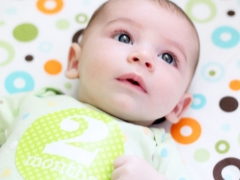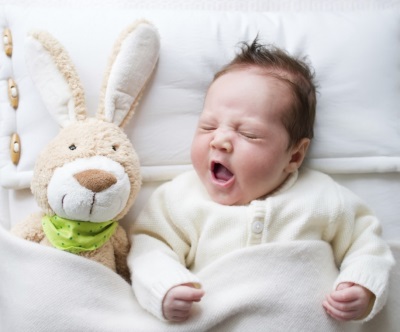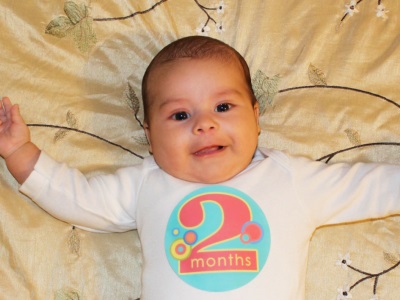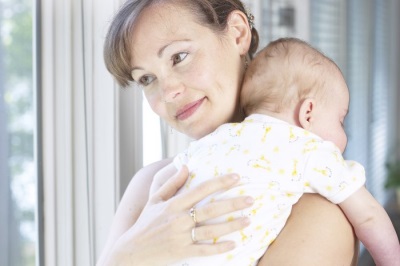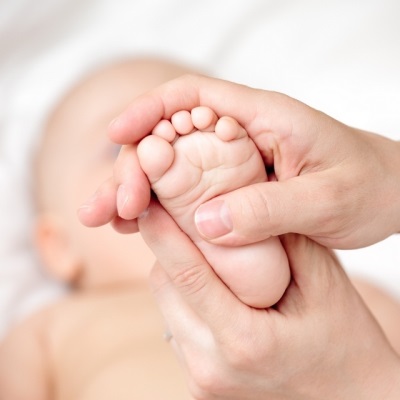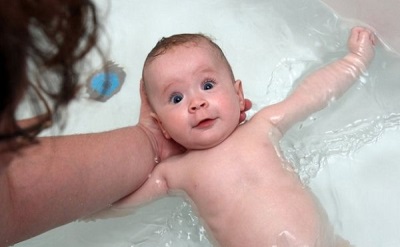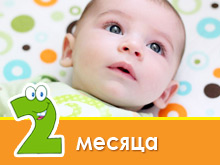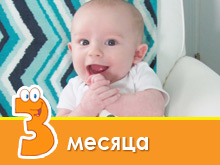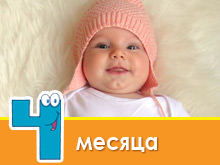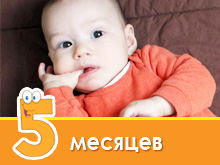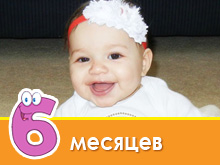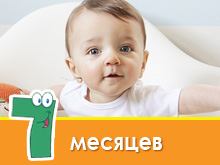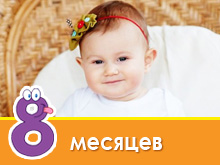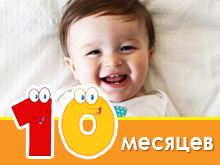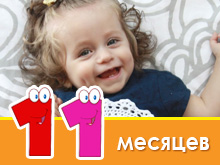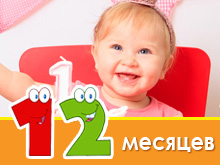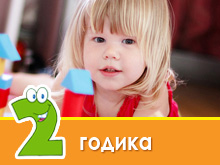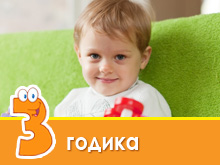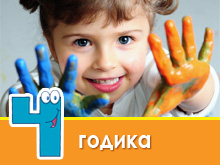Child development at 2 months
The baby is actively growing and studying everything around him, and all the organs of the infant are improving and developing. Scarce already recognizes mom, gives her her conscious smile and welcomes her with movements of her whole body. Let's find out what else the two-month-old tot is able to do and how parents can help the development of an infant of this age.
Physiological changes
- By the age of two months, the salivary glands begin to work fully in the infant. And although their functioning is not so active as to cause the formation of a large amount of saliva, it becomes more comfortable for the baby to suck the breasts. In addition, due to the more intimate contact of the mouth of the baby and her mother's breast, the little one swallows air less, which reduces the appearance of colic.
- The digestive system of the baby is actively developing. A two-month-old baby is more actively producing digestive juices and enzymes, developing beneficial microflora in the intestines, changing stools.
- Physiological hypertonus begins to fade. First, it goes down in the upper limbs, and a little later in the legs. The crawling reflex also disappears - if you put your hand under the feet of the baby lying on your stomach, the child will no longer push off.
- By two months, the communications that were in the children's heart during fetal development begin to close. Changes occur in the blood formula of the child.
- Baby's vision improves - the baby sees everything better at a distance of 50 centimeters, but objects that move quickly, the baby’s eyes do not know how to fix yet.
- A child has at least 6 urinations per day, and the type of feeding affects the baby’s stool. A baby who receives mother's milk can defecate from 1 time in several days to 12 times a day, and the frequency of excretion of feces in children of artificial children is on average 1-4 times a day.
Physical development
Height and weight of a two-month baby can vary greatly. A child can grow in the second month of life by 3-5 centimeters or add only 1 centimeter in height, and this will be a standard variant.
On average, for the second month, children gain about 800 grams of weight, but some tots can gain less, and others - more. The average increase in the volume of the chest is 2 centimeters, and the circumference of the head is 1.5 centimeters.
If you doubt and worry, find out the boundary indicators of the main physical parameters of the child’s development, which we noted in the table:
Indicator | The average value of 2 months | Boys in 2-3 months | Girls in 2-3 months |
Weight | 5100-5600 g | 4300-7100 g | 3900-6600 g |
Growth | 57.1-58.4 cm | 54.4-62.4 cm | 53-61.1 cm |
Head circumference | 38.3-39.1 cm | 36.8-41.5 cm | 35.8-40.7 cm |
Chest circumference | 37.8-38.3 cm | 35.7-40.8 cm | 35.6-39.9 cm |
Insufficient weight gain (if a 2-month-old boy weighs less than 4.3 kg, and a girl weighs less than 3.9 g) should be a reason to consult a pediatrician. Concern should cause too large an increase in head circumference - this is a good reason to show the crumbs to a neurologist in order to eliminate problems with the outflow of cerebrospinal fluid.
What baby can?
- The two-month crumb meets with a conscious smile at her mother's gentle speech and games.The range of emotions of the baby becomes very extensive - the baby can rejoice, be offended, resent, soundlessly laugh, flirt, attract attention, protest against the actions of an adult.
- Thanks to the improvement of the function of the eye muscles and the increase in the ability to concentrate, the look of the crumbs of this age has become studying and attentive. The baby recognizes mom's face and carefully examines it. The crumbs are also attracted to different bright objects. He fixes his gaze on them when they are still and when they are slowly moving in space.
- The baby is better at recognizing different sounds, at the same time distinguishes the voice of the mother and turns his head on him.
- In position on the tummy, the crumb lifts its head more confidently and is able to hold it for about a minute. At the same time, the baby's shoulder girdle comes off the surface. For just as long, the baby can already hold its head when the mother holds it vertically in her arms.
- The walking of a 2-month-old baby has become louder and more frequent. The sounds made by the baby become clearer. They are mostly vowels - "e", "and", "y", "o", "a".
- If you put your fingers or toys in the palms of a karapuz of 2 months, the baby will reflexively grasp them.
- Lying on its side, the crumb had already learned to turn into a position on the back.
- The child began to understand some cause and effect relationships. For example, the baby has already realized that his cry becomes the cause of the appearance of a mother nearby. At this age, with the help of crying, the baby tells parents of any discomfort.
Classes for development
To stimulate the physical development of the baby, parents should use:
- Massage and light gymnastics.
- Air baths. Crumbs need to be put on the changing table and completely undressed, leaving to lie without clothes. Start with 1 minute of such a bath, and then gradually increase the duration to 10 minutes.
- Walking in the fresh air for 2-4 hours daily (duration depends on weather conditions).
- Frequent laying out on a tummy that the child trained to hold a head.
Carry the baby in your arms, holding it with a "column", showing the surrounding objects and familiarizing the baby with other people. Let your child explore the faces and voices of adults and other children. Provide an opportunity for the baby to study its own body, as well as the face of the parents by touch.
In order for a child to learn to hold objects, improve tactile sensitivity and motor skills, small balls of different materials (wood, rubber, plastic, etc.) with different weights are regularly put into his pens. Such balls can be soft and hard, smooth or embossed. You need to put objects in the child's open hands and make sure that the grab reflexively grabs them. The balls can be tied to the ribbons and lowered them to the child, and when the baby grabs objects, pull them to themselves, thereby encouraging them to grab the balls tighter. Balls can be replaced with chopsticks (smooth or ribbed) and liners of different fabrics.
Try to make an exercise “Here's a Gift for a Baby”, which Tatyana Lazareva shows in the next video.
For the development of the baby's hearing, it is worth using quiet classical music, rattles and bells. Lay the baby on the back, take the bell in your hand and, holding it 60-70 centimeters from the baby’s chest, make a few bells. After waiting for the sound to subside, make another two or three bells. You can also tie a fishing line to the bell and move it, stimulating the baby to look for the source of sound. Such training of hearing can be carried out several times a day, but after 3-4 days of training it is worth taking a break for a week.
To stimulate the organ of vision, wear bright clothes for the baby and surround the baby with objects of different colors. Hang bright toys above the baby’s crib about 50 centimeters from the child. Scarce will not only look at them, but also begin to try to grab.
Conduct peculiar dialogues with the baby, copying the karapuz's walking. The kid will hear himself from the side and repeat after you, while simultaneously training articulation and speech. Children also like it a lot when mom imitates animal sounds (meows, moos).
After introducing the baby with a regular massage, try using objects that can be rolled around the body of the baby, for example, smooth sticks, small balls, pencils. If you took a large object for such a massage, roll it only on the baby’s back, and small objects can be used to stroke the whole body of the toddler.
For “self-massage”, you can scatter grits (millet, rice, buckwheat, beans) on the changing table and put the baby on it backwards. If the crumbs of the crumbs are not very dexterous yet and cannot grasp the grains, you can spread crumbs on the croup and on the tummy. Moving on such a massage material, the child will develop tactile sensitivity.
Daily regime
Many babies by the age of two months have their own daily routine. It is important for parents to take into account the biorhythms of the infant and adjust the main regime moments for them (walk, developmental activities, bathing).
Most of the day a two-month baby spends in a dream. The baby sleeps at night about 11 hours, and in the daytime 4 times for 1.5-2 hours. It will also be the norm if several daytime dreams last up to 3 hours and the rest will be very short (half an hour). Waking periods at this age are still non-durable. On average, 4 of them lasting from 1 to 1.5 hours.
The number of feedings per 2 months is 6-7, and the interval between them is about 3 hours. There is no night break at this age in the feedings, while during the night feeding the baby does not fully wake up.
Care
A two-month-old toddler should not be left alone - let the baby always be under the supervision of an adult. When caring for baby, you need to wash the child daily by rubbing his eyes, nose, ears and face. They wash the baby under running water after each excretion of feces and after several urination.
Daily bathing of a child for 2 months should last 5 minutes in water at a temperature of 36-37 degrees.
The head of a 2-month-old baby is washed two or three times a week.
Nutrition
The best food for a baby aged 2 months is considered to be mother's milk. It provides the baby with the necessary nutrients and changes simultaneously with the growth of the baby. The best option for breastfeeding is called on-demand feeding, when the crumb is applied as many times as it needs.
The baby can be applied up to four times per hour to suck a few minutes, and fully eat my mother's milk with an interval of 40 minutes to 2 and a half hours. A child of two months usually always asks the breast upon waking and falling asleep. At night, the child is applied mainly from 3 to 8 am.
But for the nutrition of children artificially there are strict rules. If the child is fed with the mixture, then to calculate the daily volume of food the weight of the crumbs is divided by 6. Having learned the total volume of the mixture per day, it is divided by the number of feedings (6-8). On average, a child at this age eats 900 g of the mixture per day — that is, approximately 130 g per feeding, if feedings 7.
Frequent problems
- Colic. Despite the maturation of the digestive tract, many babies of two months still suffer from colic. To prevent discomfort and pain, pediatricians recommend using physical methods - keep the crumbs after feeding, spread the baby on the belly before eating, take breaks in sucking, giving the opportunity to burry air.
- Thrush of the mouth. This problem may occur in infants due to infection with Candida from the mother or with reduced immunity.Having noticed white bloom in the baby’s mouth, the baby should be shown to the doctor.
- Prickly heat. An overheating of the child leads to its occurrence, and proper hygiene and clothing for the weather will serve as prevention of such a problem. To quickly eliminate the appeared prickly heat, add chamomile extract or a decoction of oak bark to the bathing water.
- Diaper rash. Their appearance is associated with a rare diaper change, poor leaching and rare air baths.
- Rash on face. At 2 months of age, it is often associated with the removal of maternal hormones from the infant’s body from the milk. Such a rash goes away on its own by 3 months and it is not necessary to treat it, it is recommended only bathing in decoction of herbs.
In order to reduce the increased muscle tone in your arms, we recommend a massage at 2 months, which is shown in the next video by Nikolay Nikonov - the leading doctor and massage therapist in Russia.
